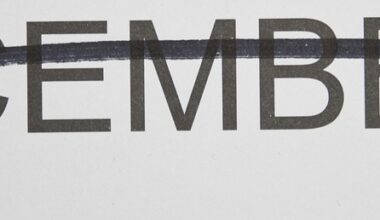Communication Management in Remote Project Teams
In today’s increasingly digital workspace, understanding communication management is essential for remote project teams. Effective communication leads to seamless project execution and improved team collaboration. Communication management encompasses various strategies and tools to facilitate effective dialogues among team members, especially when they’re dispersed globally. Utilizing digital platforms like Slack or Microsoft Teams can bridge geographical gaps, ensuring every member remains informed about the project’s progression. Crucially, establishing consistent communication protocols can help mitigate misunderstandings and foster accountability within the team. Regular check-ins, updates, and feedback loops can enhance team cohesion and project morale. Additionally, setting clear communication expectations from the outset cultivates an environment of transparency and trust. Adopting asynchronous communication methods can also be beneficial, allowing team members to engage at their convenience, which respects the diversity in time zones. Ultimately, by prioritizing communication within remote project teams, organizations can leverage diverse talents and ideas, enhancing productivity and creativity across the board. This approach aligns with contemporary project management best practices that advocate for flexibility and adaptability in managing diverse teams.
The Importance of Communication Tools
Communication tools play a pivotal role in the success of remote project teams. These tools enhance real-time interactions, promote collaboration, and ensure that critical information is readily available. Utilizing tools like Trello or Asana not only helps organize tasks but also enables members to track progress and share updates efficiently. Video conferencing software such as Zoom or Google Meet allows for face-to-face interactions, essential for building rapport among team members. Furthermore, these tools often include features like screen sharing and collaborative documents, enhancing group discussions and decision-making processes. It is equally vital for teams to select tools that suit their specific needs and working styles. While the options might be overwhelming, focusing on user-friendliness and integration capabilities will yield the best results. Beyond functionality, providing training on these tools ensures their effective usage. Encouraging team feedback on preferred tools helps refine the communication strategy and fosters inclusivity in the decision-making process. Ultimately, a tailored toolset that fits the project’s requirements leads to enhanced team dynamics and successful project completions.
Moreover, establishing a communication framework can significantly impact team productivity. A well-defined framework includes guidelines on responding to messages, setting meeting frequencies, and choosing appropriate channels for different types of communication. For instance, quick updates or non-critical questions may be best suited for instant messaging, while more in-depth discussions might require video calls or documented meetings. This distinction enhances clarity and reduces information overload, leading to more focused and productive conversations. Additionally, introducing a culture of feedback where team members can express concerns or suggestions regarding communication practices helps cultivate an open and proactive environment. Regular pulse checks, where team morale and communication effectiveness are assessed, support continuous improvement in communication management. Such assessments allow project leaders to identify any barriers hindering effective communication and to implement solutions promptly. Moreover, recognizing and rewarding effective communicators within the team reinforces the importance of these skills. By fostering a culture that values strong communication practices, organizations can improve overall project engagement and success rates, leading to more efficient and effective project outcomes.
Best Practices for Effective Communication
Implementing best practices in communication management fosters a productive remote work atmosphere. First, ensure that communication channels are clearly defined and accessible to all team members. This accessibility eliminates confusion regarding where to find pertinent information and whom to contact for various issues. Secondly, regular team meetings should be scheduled to promote transparency regarding project status, challenges faced, and victories achieved. Utilizing a rotating schedule for these meetings accommodates different time zones and inclusivity. Thirdly, creating a shared document for meeting notes helps keep everyone aligned on tasks and deadlines, which facilitates accountability. To further enhance collaboration, utilize brainstorming and idea-sharing sessions, enabling creativity to flow and fostering innovation. Additionally, adherence to a communication etiquette, like being concise and respectful, can reduce misunderstandings among team members. It’s equally important to encourage asynchronous communication practices, allowing team members to contribute at their own pace. Finally, incorporating visual aids in communication, such as charts or infographics, can help clarify complex ideas, making them more understandable. These practices will enable remote teams to navigate communication challenges and work toward common goals.
Conflict resolution is another critical aspect of communication management within remote teams. Conflicts can arise from misunderstandings, differing opinions, or unmet expectations, and how they are handled can significantly impact team dynamics. It is essential to foster an environment where team members feel safe to express concerns without fear of retribution. Conflict resolution should follow a structured approach, starting with active listening to understand all perspectives involved. Facilitating open discussions can lead to collaborative problem-solving, where solutions emerge from collective input. Encouraging a united approach to challenges fortifies team relationships, enhancing overall cohesion. Moreover, project managers should be equipped with conflict resolution strategies, including mediation and negotiation skills, to guide the team effectively through disputes. Establishing clear guidelines for addressing conflicts preemptively helps minimize the escalation of issues and fosters a proactive mindset. Regular training sessions on conflict resolution techniques enhance teams’ readiness to approach disagreements constructively. By focusing on resolving conflicts positively, remote project teams can ensure that they maintain productivity and collaboration, building a resilient culture that supports long-term success.
The Role of Leadership in Communication
Leadership is pivotal in shaping the communication landscape of remote project teams. Strong leaders set the tone for how communication is conducted and encourage open dialogue among team members. By modeling effective communication practices, leaders can create an atmosphere of trust and collaboration. They must prioritize transparent communication, providing updates on project developments and addressing challenges candidly. Moreover, facilitating one-on-one meetings enables leaders to connect with team members individually, fostering stronger relationships. It also gives team members an opportunity to share concerns and suggestions in a safe environment. Furthermore, leaders should actively solicit feedback regarding communication effectiveness, encouraging continuous improvement. Incorporating team input into communication strategies demonstrates value and promotes engagement. Moreover, recognizing and celebrating team achievements cultivates a positive communication culture, fostering motivation among team members. Leaders also have a responsibility to implement training sessions to improve communication skills within the team, ensuring everyone feels empowered to voice their thoughts clearly. Ultimately, effective leadership in communication management enhances team dynamics and drives project success, paving the way for productive remote work environments.
In conclusion, effective communication management is crucial for the success of remote project teams. The seamless exchange of information, feedback, and ideas plays a vital role in fostering collaboration and achieving project objectives. By adopting communication tools that enhance connectivity, establishing clear communication frameworks, and adhering to best practices, remote teams can navigate the complexities of dispersed work. Furthermore, addressing conflicts constructively and promoting inclusive practices enhances individual and team engagement, contributing to project success. Leaders play a critical role in cultivating a positive communication culture, leading efforts to continuously improve communication strategies. As organizations continue to embrace remote work, prioritizing communication management will be essential in maximizing team potential. Enhanced communication not only facilitates project management but also promotes team cohesion and creativity, ultimately driving innovation. Therefore, investing time and resources in refining communication practices is not just beneficial but necessary for the long-term sustainability of remote project teams. By implementing these strategies, organizations will be well-positioned to overcome communication challenges and unlock the full potential of their diverse talents.


